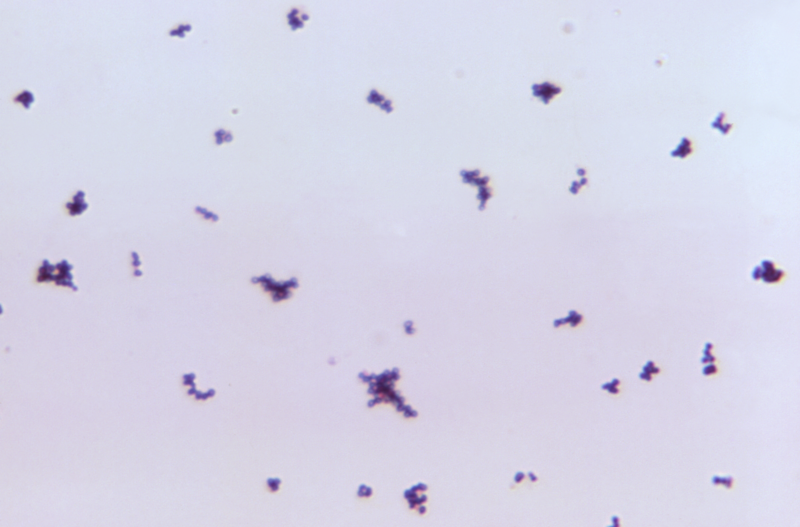File:Rothia dentocariosa PHIL21290.png

Original file (3,045 × 2,005 pixels, file size: 12.36 MB, MIME type: image/png)
Captions
Captions
Summary
[edit]| DescriptionRothia dentocariosa PHIL21290.png |
English: Under a magnification of 1150X, this photomicrograph of a Gram-stained sample, harvested from a trypticase-soy broth, which had been incubated for a 3-day time period, revealed the presence of numerous, Gram-positive, Rothia dentocariosa cocci bacteria, strain 44-116-68, formerly known as Stomatococcus mucilaginosus. R. dentocariosa is normally found as an inhabitant of the human mouth, and respiratory tract. |
||
| Date | |||
| Source |
|
||
| Author | CDC/ Dr. Lucille K. Georg |
Licensing
[edit]| Public domainPublic domainfalsefalse |
This image is a work of the Centers for Disease Control and Prevention, part of the United States Department of Health and Human Services, taken or made as part of an employee's official duties. As a work of the U.S. federal government, the image is in the public domain.
|
 |
File history
Click on a date/time to view the file as it appeared at that time.
| Date/Time | Thumbnail | Dimensions | User | Comment | |
|---|---|---|---|---|---|
| current | 17:09, 1 June 2020 |  | 3,045 × 2,005 (12.36 MB) | -sasha- (talk | contribs) | == {{int:filedesc}} == {{Information |Description={{en|Under a magnification of 1150X, this photomicrograph of a Gram-stained sample, harvested from a trypticase-soy broth, which had been incubated for a 3-day time period, revealed the presence of numerous, Gram-positive, ''Rothia dentocariosa'' cocci bacteria, strain 44-116-68, formerly known as ''Stomatococcus mucilaginosus''. ''R. dentocariosa'' is normally found as an inhabitant of the human mouth, and respiratory tract.}} |Source={{CDC-P... |
You cannot overwrite this file.
File usage on Commons
The following page uses this file:
- File:Rothia dentocariosa 21290.png (file redirect)
Metadata
This file contains additional information such as Exif metadata which may have been added by the digital camera, scanner, or software program used to create or digitize it. If the file has been modified from its original state, some details such as the timestamp may not fully reflect those of the original file. The timestamp is only as accurate as the clock in the camera, and it may be completely wrong.
| Horizontal resolution | 37.79 dpc |
|---|---|
| Vertical resolution | 37.79 dpc |
